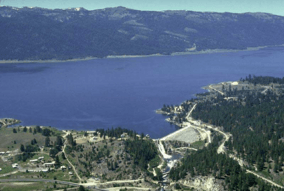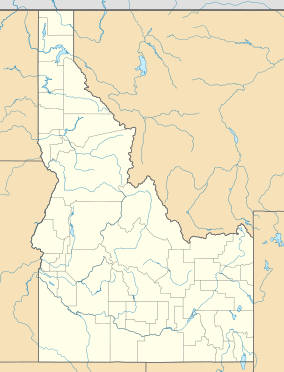Lake Cascade State Park facts for kids
Quick facts for kids Lake Cascade State Park |
|
|---|---|
|
IUCN Category V (Protected Landscape/Seascape)
|
|

|
|
| Location | Valley County, Idaho, United States |
| Nearest city | Cascade, Idaho |
| Area | 500 acres (200 ha) |
| Elevation | 4,828 ft (1,472 m) |
| Designation | Idaho state park |
| Established | 1999 |
| Administrator | Idaho Department of Parks and Recreation |
| Website | Lake Cascade State Park |
Lake Cascade State Park is an amazing place in Idaho, United States. It's a big public area where you can have lots of fun outdoors. The park covers about 500 acres and is located around Lake Cascade. This lake is huge, stretching over 27,000 acres! It was formed by damming the North Fork Payette River.
The park offers many cool things to do. You can find 279 campsites across 10 different campgrounds. There are also six boat ramps, perfect for getting out on the water. Whether you love hiking, fishing, or watching birds, Lake Cascade State Park has something for you. In winter, you can even go ice fishing or skiing!
Discover the Wildlife at Lake Cascade
Lake Cascade State Park is a fantastic spot to see many different animals. It's like a giant outdoor classroom where you can learn about nature. From tiny songbirds to large mammals, there's always something interesting to spot.
Animals You Might See
The park is home to a wide variety of creatures. Keep your eyes peeled for these animals:
- Birds: You can often see waterfowl like ducks and geese. Look up to spot majestic eagles and hawks soaring overhead. Owls are also around, especially at night. Many different songbirds fill the air with their tunes.
- Mammals: The forests and fields are home to deer, raccoons, and foxes. You might even spot an black bear or a elk. Smaller animals like badgers and skunks also live here. If you are very lucky, you might even see a cougar or a grizzly bear, though they are rare.
- Fish: The lake is full of fish, making it a great place for fishing. You can catch rainbow trout, coho salmon, smallmouth bass, and perch.
Remember to always observe wildlife from a safe distance. This helps keep both you and the animals safe.



